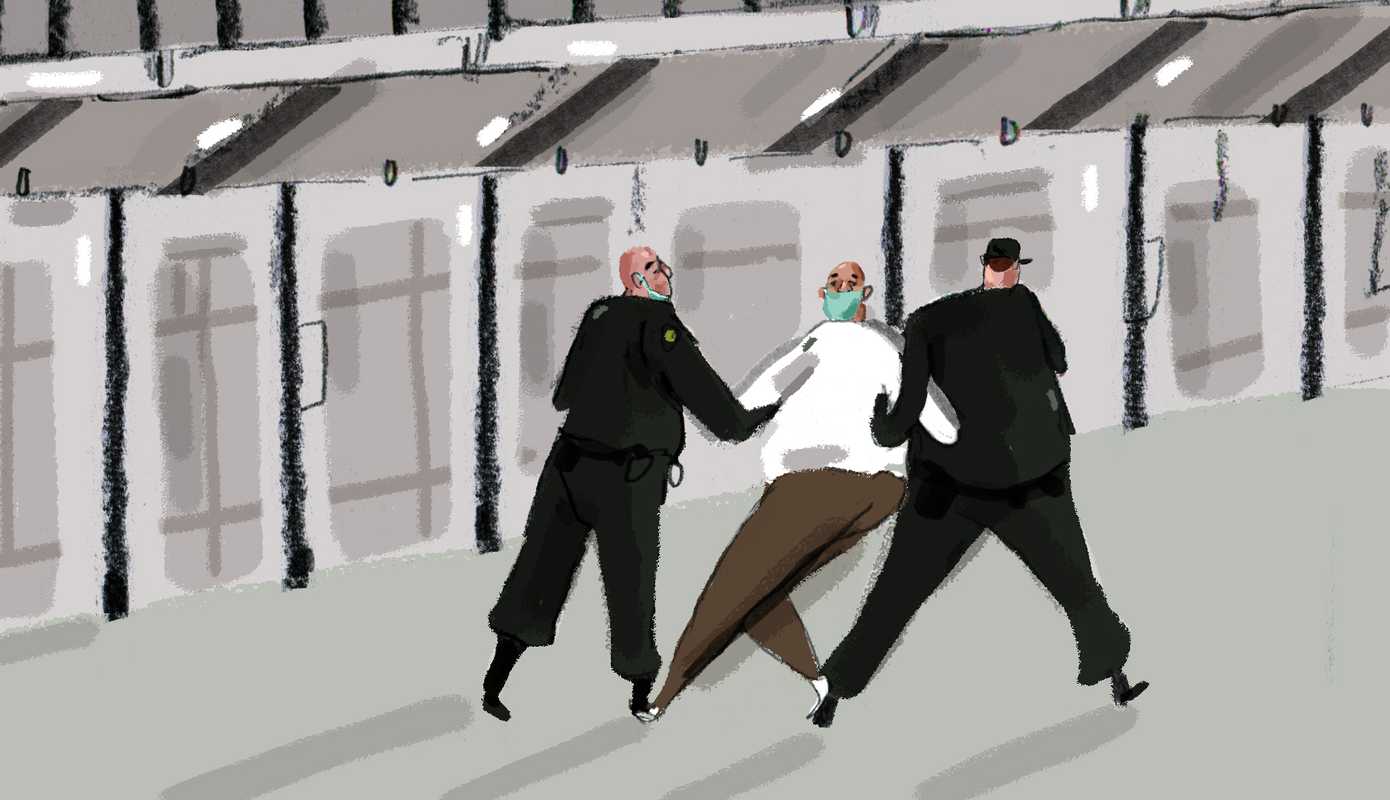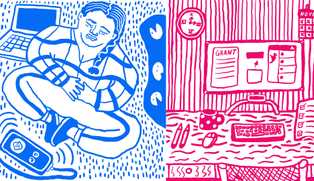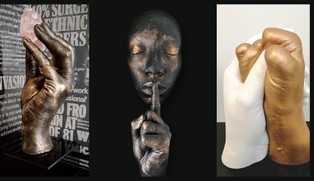It’s Friday the 13th of March, 2020. Though I haven’t yet opened my eyes to take in the familiar sight of my six-by-nine foot concrete and steel cage, a chill in the air nips at my tongue on its way into my lungs. The Monroe Correctional Complex in Washington State is over a hundred years old, and despite my thin, knitted blanket doing little to keep me warm, I burrow deeper into it—more out of habit than anything. It will soon be time to get up and call my wife. She’s in London, which means each morning, when my mental alarm brings me to life just before the cell doors open at 6:30, it’s nearing 3:30 in the afternoon for her.
What I don’t yet know, is that today the doors won’t be opening because a guard who works in my living unit has tested positive for Covid-19, and unbeknownst to me or any of my neighbors, we’ve just entered into a quarantine during which we’ll be monitored for symptoms until 14 days from his last shift. Our living conditions will be less comfortable than those of prisoners placed on disciplinary lockdowns. Our food will be served late and cold at cell-fronts, and we’ll be allowed access to showers and phones for twenty minutes a day. Those of us lucky enough to have televisions in our cells will watch our state lead the US in Covid-related deaths as the virus sweeps through a nursing home mere miles away.
Right now, however, I arch my back in a limbless stretch, open my eyes, and glance up to discover darkness beyond the steel bars. The clock says it’s past seven, which means I’ve overslept. A sequence of thoughts leads me to the conclusion that the guards are conducting a safety muster, and the doors will be opened at 7:30.
So I roll off the metal bunk, take two steps to my sink and make a cup of lukewarm instant coffee, unaware that reporters will soon begin to point out that minority communities are being disproportionately affected by Covid-19 due to a lesser quality of healthcare in low-income neighborhoods. Eventually, data will be made public demonstrating that one in every five coronavirus-related deaths in the US has taken place in a long-term care facility because of close living quarters that enable contagion. Early on, however, those championing both points will fail to mention that not only are minorities vastly overrepresented amongst America’s incarcerated population, but prisons are, by definition, long-term care facilities.

On a normal day, I would make my way to a row of phones lining a brick wall across from my cell, where I would drink my coffee while speaking with Cait. Then, before eating breakfast, I would head into the gym for a grueling cardio session. For Latino prisoners, this is a common way to spend our mornings. We exist as a community within the incarcerated community, and tend to eat, live and exercise together. In group settings lately, talk of coronavirus has been dismissive and humorous, because to us, fear is unacceptable. Yet it’s also the only logical response to the prospect of such a deadly pandemic seeping into our home, which accommodates infectious diseases like a petri dish.
Taking a seat on the bunk, I switch on my television and sip from a plastic mug as I wait for light from the screen, which for the next few months, will be my main source of information about the looming threat to my health and wellbeing. Department of Corrections administrators will instruct their officers to strategically withhold information about an outbreak in MCC after their mishandling of the crisis leads to the first Covid-related prisoner uprising in the country. The riot will make national headlines, and begin to appear in arguments for – and also against – thinning out the nation’s incarcerated population in order to reduce the risks of institutional outbreaks. Subsequently, Washington State will release a round of nonviolent offenders with three months or less remaining on their sentences, and prison abolitionists, feeling the buzz of a victory, will fall silent in the media. But with the inflow of new detainees here in MCC, we’ll be informed that cells which previously housed one resident will now need to store two, leaving us to wonder what the point of reducing the population was, if empty bunks were just going to be swiftly refilled.
My attention to the world news since the virus found its way into the public eye has bordered on obsessive, and I’ve used my platform to publish articles predicting what’s to come in our prisons with an almost eerie accuracy. When I speak with my Latino neighbors privately, they’re often more transparent in regard to their fears, because despite societal stigmas we are capable of understanding that this virus is real and people are really dying. Moreover, if the healthcare in low-income neighborhoods is sub-par, the healthcare in MCC is barely more than a patronizing smokescreen – last year our medical director was fired for malpractice after seven patients died in her care. As my TV screen finally comes to life, I think of statistics posted on the Washington State Department of Corrections’ website, stating that Latinos make up 11 percent of the state’s population, yet 14 percent of the incarcerated community. I wonder if reporters will eventually mention that this is yet another way coronavirus is disproportionately affecting Latinx people.

But they won’t. At least not on the stations I receive. Visits, educational programing, and religious services will all be suspended in MCC, making DOC staff the only likely vessel by which Covid-19 might hitch a ride into the facility, yet guards will resist having to wear masks while at work. Some will even protest against it to their union. When one gets sick and dies, the local news will imply it was because of the rioters, as if we prisoners had somehow introduced the virus into our home.
Italy’s death toll is rising rapidly. Each morning, I check the numbers, unaware that soon my own country will surpass others to such a degree that we’ll envy the horrors currently being endured overseas. Once I see today’s updates I kill the screen, finish my coffee in a couple monstrous gulps, and lay back until 7:30 has come and gone, the doors still haven’t opened, and nobody has made a peep because in prison, it’s considered an inexcusable act of disrespect to be heard before 10AM.Once our quarantine ends, the neighboring unit will almost instantly enter into one of their own. Anybody suspected of having Covid will be taken to segregation, where they’ll only be allowed to shower once a week. So when the inevitable outbreak does occur in MCC, most will hide their symptoms. I will be among them.But right now, I don’t know any of this. Right now, I miss my wife and children, who will hear my voice significantly less in 2020, after guidelines issued by the governor will confine me to this tiny cage for all but a couple hours a day, during which fights will break out amongst individuals scrambling to use an inadequate number of phones. Right now, the mostly-unspoken fears of my community are hovering like a fog, somewhere in my subconscious, because though I’m Mexican on my mother’s side, I’m white-passable, and don’t always understand the full scope of the struggles of my peers. Right now, I’m beginning to figure out why the cell doors haven’t yet opened, and wondering what the future has in store for those of us overrepresented by incarceration and death, yet underrepresented by reporters and politicians who only seem to mention such struggles when they can be politicized.
Michael J Moore lives in Washington state. His books include Highway Twenty, which appeared on the Preliminary Ballot for the Bram Stoker Award, the bestselling novel After the Change, which is used as curriculum at the University of Washington, and the psychological thriller Secret Harbor. His work has won awards, has appeared in various magazines, newspapers (including HuffPost), anthologies and literary journals and has been adapted for theater produced in Seattle. Follow him on Twitter or Instagram.




